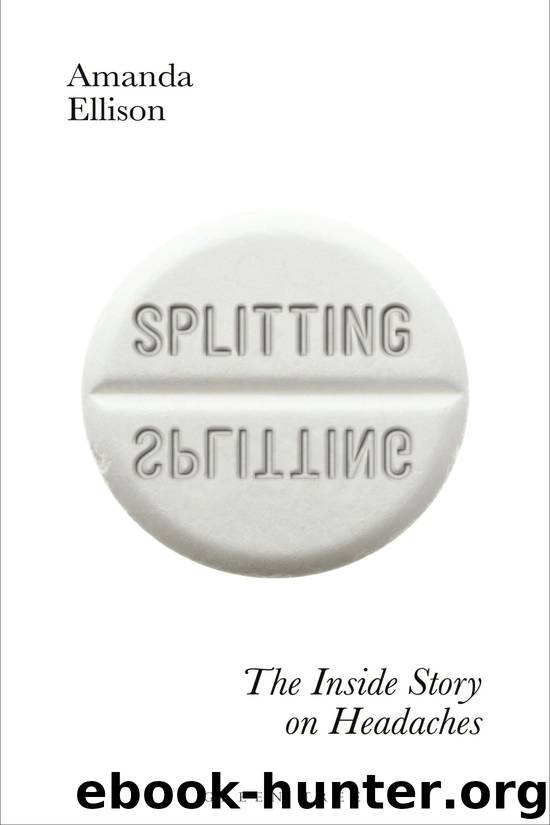Splitting by Amanda Ellison

Author:Amanda Ellison
Language: eng
Format: epub
ISBN: 9781472971449
Publisher: Bloomsbury Publishing
FIGURE 3 Two Neurons ‘Talking’
The role of axons
The action potential is kicked off in the cell body of a neuron, in an area called the axon hillock just at the start of the axon (or in less technical terms, ‘the stringy bit’) that carries the signal to the next neuron. If we think about one neuron in particular, there will be many neurons connecting to it trying to pass on their signals. It is the axon hillock’s job to decide if it has had enough excitatory input to pass on the signal. If it has, then it generates an action potential. If it hasn’t then it just keeps quiet.
Some other things are worth saying that are important for our cortical spreading depression story. Action potentials are all-or-nothing events. They all look exactly the same. You can’t add them together. So how do you know if there is a particularly forceful stimulus for example, or a really bright light as opposed to a dim one? Well, magnitude is transmitted by frequency. A little touch will elicit a few action potentials per unit time, but a proper punch will cause loads of action potentials. You also can’t have two action potentials in the same patch of neurons at the same time because the ions are in the wrong place to generate one. And action potentials travel in one direction only, away from the cell body. The extra dip in negativity of the inside of the cell when potassium has flooded out takes care of that detail.
The action potential travels down the axon by regenerating itself at every point down the neuron. Support cells called glial cells wrap themselves around most neurons, forming a myelin sheath that acts like the insulation we see on electrical cable. The action potential can then jump between gaps between the glial cells and only has to regenerate itself every now and again. This makes nerve conduction faster and more efficient. We can track rates of myelination (the creation of the myelin sheath) in different parts of the brain to the acquisition of new skills in babies and young people. 1
The case of Golgi vs Cajal
Because we are living human beings and don’t catch excitability from some neuroscientist in a lab coat with an electrode stuck into the Petri dish in which we are living (although there is a movie in that), we have to think about how it happens in real life, where neurons don’t live in isolation. Let’s think about two neurons. How does activity in the first get passed on to the second? This fundamental question caused one of the biggest and certainly most infamous tiffs in scientific history. It started when the Italian Camillo Golgi developed a way to see the structure of a neuron and what was in it under the rudimentary microscopes that were around in the mid- to late-1800s. He would slice up brain tissue as thinly as he could, shine light through the material and magnify the image through a number of convex lenses.
Download
This site does not store any files on its server. We only index and link to content provided by other sites. Please contact the content providers to delete copyright contents if any and email us, we'll remove relevant links or contents immediately.
Men In Love by Nancy Friday(4972)
Everything Happens for a Reason by Kate Bowler(4481)
The Immortal Life of Henrietta Lacks by Rebecca Skloot(4264)
Why We Sleep by Matthew Walker(4194)
The Sports Rules Book by Human Kinetics(4081)
Not a Diet Book by James Smith(3156)
The Emperor of All Maladies: A Biography of Cancer by Siddhartha Mukherjee(2935)
Sapiens and Homo Deus by Yuval Noah Harari(2855)
Day by Elie Wiesel(2599)
Angels in America by Tony Kushner(2395)
Endless Forms Most Beautiful by Sean B. Carroll(2353)
A Burst of Light by Audre Lorde(2352)
Hashimoto's Protocol by Izabella Wentz PharmD(2206)
Dirty Genes by Ben Lynch(2165)
Reservoir 13 by Jon McGregor(2149)
And the Band Played On by Randy Shilts(2020)
Wonder by R J Palacio(1993)
The Immune System Recovery Plan by Susan Blum(1971)
Stretching to Stay Young by Jessica Matthews(1948)
